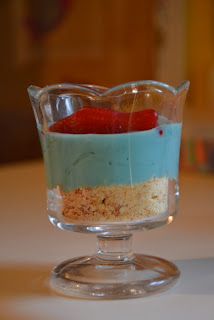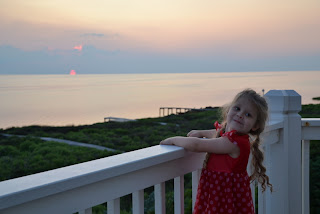Here is our tutorial on how to do a face-out bookshelf. This is the way my husband designed so you couldn't see a back on the shelves--it looks like they are free-floating. Hopefully I can translate from Engineer-ese to English.
Materials Needed:
- 3/4"x1.5" pieces of wood cut to the length you want them on the wall. This is the actual size of the wood. They will be called 1"x2" in the store. You will need two pieces of wood for each shelf. Buy as many as you need to fill the space on your wall.
- 3" Grabber screws
- Glue if desired (we used wood glue)
- Paint and paint brush (we use foam brushes for projects like this)
- Finish nail gun nails
- Wood putty
Tools Needed:
- Drill
- Router and/or Table Saw
- Measuring Tape
- Pencil
- Finish Nail Gun
Prepping Wood
1.First, buy your wood. If you are confused on what to buy, see the picture below. Click on it to enlarge. The wood shown in this picture would make one shelf. Cut wood to desired length.
2. Next, you need to router and notch one piece of wood for each shelf.
Use a router or a dado on a table saw to notch one corner (all the way down the long side) as shown. Again, click on the picture to enlarge.
Use a router the opposite corner if desired. You can do it however you like things done. We used a 45 degree chamfer. You could do things more fancy if you like, or you can do nothing at all.
3. Brush all sawdust off and paint. Allow paint to fully dry. You don't have to paint the 1" (3/4") sides of the un-notched wood.
Putting Up the Shelves
1. Measure and mark on your wall where you want the shelves. You might want to involve a level.
2. Pre-drill holes in your wall where studs are. It is very important you drill into studs.
3. You can glue one side of the shelf if desired and hold to the wall. We can't remember if we used it at this step or not.
4. Use 3" grabber screws to anchor to the studs. You want the 1" (3/4") side facing out so the long side of the wood is where your book will sit. Countersink screws so that they to just below the surface of the wood. Just make sure you don't go too far and split your wood.
Here are all of our initial pieces on the wall
5. Uses a finish nail gun to put up the face piece. At this step, we did use glue to secure the two wood pieces together. You want the notched side in and up and the routered side out and down. See the picture below. The notching makes it so the shelf is a bit deeper while providing a lip to keep books on the shelf.
Finishing Touches
1. Use wood putty to fill in holes where finish nail gun put nails in. You want this to just go in the holes and not bump out beyond the hole.
2. Paint over wood putty once it is dry.
3. Put books up!
























 Needless to say, she adored it.
Needless to say, she adored it. Take a minute to watch the clouds with them...
Take a minute to watch the clouds with them...
 and how the current ripples and takes on a pinky-gray tint from the sunset's reflection.
and how the current ripples and takes on a pinky-gray tint from the sunset's reflection. Don't forget to take time to enjoy the little moments, to belly laugh a few times, and to *gasp* keep the kids up a little past bedtime.
Don't forget to take time to enjoy the little moments, to belly laugh a few times, and to *gasp* keep the kids up a little past bedtime.
 A few weeks ago we got the cutest book from the library,
A few weeks ago we got the cutest book from the library, 
